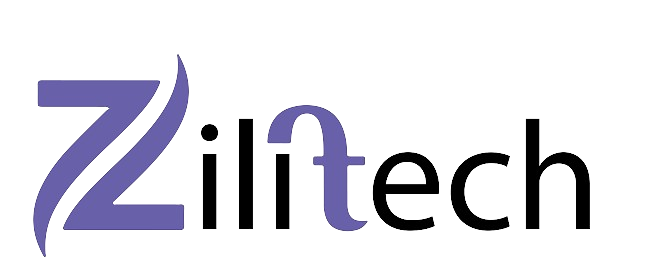Timetable management is crucial for schools, universities, and organizations to ensure smooth operation and efficient use of resources. In an age where technology continuously advances, the rise of automated timetable generators represents a significant leap forward in managing schedules effectively. But what exactly makes these systems so valuable, and why should educational institutions consider adopting them?
What is an Automated Timetable Generator?
Definition and Overview
An automated timetable generator is a software tool that leverages algorithms and artificial intelligence (AI) to create optimized schedules. Unlike traditional manual methods, these generators can swiftly arrange classes, allocate resources, and minimize conflicts, all while adapting to specific requirements.
Key Features
Automated timetable generators often include:
- Algorithmic Scheduling: Using AI to find the best possible arrangement.
- Conflict Resolution: Automatic detection and elimination of scheduling conflicts.
- Customization Options: Flexibility to adapt to various needs and constraints.
- Integration Capabilities: Compatibility with existing systems and communication tools.
How Automated Timetable Generators Work
Basic Functionality
At its core, an automated timetable generator inputs data such as class schedules, teacher availability, and room capacities. The system then processes this information to produce a timetable that meets all constraints and preferences.
Algorithms and AI in Timetable Generation
Modern systems utilize sophisticated algorithms that factor in multiple variables simultaneously. AI enables the generator to learn from past scheduling patterns and improve its efficiency over time.
Efficiency and Time-Saving Benefits
Speed of Timetable Creation
Creating a timetable manually can be a labor-intensive process. Automated systems can produce comprehensive schedules in a fraction of the time, freeing up administrators for other tasks.
Reduction of Human Error
Human error is an inevitable part of manual scheduling. Automated generators minimize these errors by following set rules and algorithms, ensuring a higher accuracy level in the final timetable.
Improved Resource Allocation
Optimal Use of Facilities and Staff
Automated timetable generators can allocate resources like classrooms and staff more effectively, ensuring that facilities are used to their full potential and that teachers’ time is managed efficiently.
Balancing Class Loads
By analyzing class sizes and availability, these systems can distribute classes evenly, avoiding scenarios where some classes are overcrowded while others have low attendance.
Customization and Flexibility
Adapting to Changing Needs
Educational institutions often face changing schedules and requirements. Automated generators offer the flexibility to quickly adapt to these changes without extensive manual adjustments.
Personalization Options
Users can customize timetables to reflect specific needs, such as accommodating special events, extracurricular activities, or individual teacher preferences.
Conflict Resolution
Automated Detection and Resolution
One of the standout features of automated timetable generators is their ability to detect and resolve conflicts. Whether it’s double-booking a classroom or scheduling a teacher for overlapping classes, the system identifies issues and provides solutions.
Minimizing Scheduling Conflicts
By continuously analyzing the timetable for potential clashes, these systems help maintain a conflict-free schedule, reducing disruptions and enhancing overall efficiency.
Enhanced Collaboration and Communication
Integration with Communication Tools
Many automated timetable generators integrate with communication platforms, making it easier for staff and students to stay informed about schedule changes and updates.
Facilitating Staff Coordination
Automated systems enhance coordination among staff by providing a centralized platform for timetable management, leading to improved communication and collaboration.
Data-Driven Decision Making
Analytics and Reporting Features
These systems offer robust analytics and reporting tools that provide insights into scheduling patterns and resource usage. This data can be invaluable for making informed decisions about future schedules.
Using Data to Improve Scheduling
By analyzing data from past schedules, institutions can identify trends and areas for improvement, leading to more efficient and effective timetable management.
Cost-Effectiveness
Reduction in Administrative Costs
Automated timetable generators can significantly reduce the time and labor costs associated with manual scheduling, making them a cost-effective solution for educational institutions.
Better Use of Budget
By optimizing resource allocation, these systems ensure that the institution’s budget is used more effectively, reducing waste and improving financial management.
Accessibility and User-Friendliness
Easy Interface for All Users
Automated timetable generators typically feature user-friendly interfaces that make it easy for all users, regardless of their technical expertise, to manage and adjust schedules.
Support for Diverse User Needs
These systems are designed to accommodate a variety of needs, including those of different departments, staff roles, and accessibility requirements.
Scalability
Adapting to Growing Institutions
As institutions grow, their scheduling needs become more complex. Automated timetable generators can scale to meet these increasing demands without compromising on efficiency or accuracy.
Handling Complex Scheduling Scenarios
Whether it’s managing multiple campuses or intricate course structures, automated systems can handle complex scheduling scenarios that would be challenging with manual methods.
Security and Compliance
Ensuring Data Privacy
Data privacy is a critical concern for educational institutions. Automated timetable generators often include robust security measures to protect sensitive information.
Compliance with Regulations
These systems are designed to comply with relevant regulations, ensuring that institutions meet their legal obligations while managing schedules.
Case Studies
Examples from Schools and Universities
Various schools and universities have successfully implemented automated timetable generators, experiencing improvements in efficiency and accuracy. For instance, Example University reported a 30% reduction in scheduling conflicts within the first year of implementation.
Success Stories
Institutions that have adopted these systems often share success stories of how automated timetable generators have streamlined their scheduling processes, improved resource allocation, and reduced administrative burdens.
Conclusion
Automated timetable generators offer a myriad of benefits, from saving time and reducing errors to enhancing resource allocation and supporting data-driven decision-making. As educational institutions continue to evolve, these tools will play a crucial role in managing schedules effectively and efficiently.
FAQs
1. How do automated timetable generators handle last-minute changes?
Automated timetable generators can quickly adapt to last-minute changes by re-evaluating the entire schedule and making adjustments to accommodate new requirements.
2. Can automated timetable generators integrate with existing systems?
Yes, most automated timetable generators are designed to integrate seamlessly with existing systems such as student information systems and communication tools.
3. Are there any costs associated with implementing an automated timetable generator?
While there may be initial costs for software and training, the long-term savings in time and administrative costs often outweigh these initial expenses.
4. How secure are automated timetable generators?
These systems typically include advanced security features to protect sensitive data and ensure compliance with privacy regulations.
5. What kind of support is available for users of automated timetable generators?
Most providers offer comprehensive support, including training, documentation, and customer service, to help users effectively implement and use the system.





